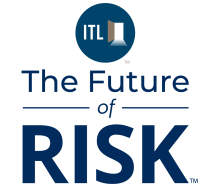Recent global research has highlighted a huge talent issue in the insurance industry. Just 9% of the insurance workforce is in digital and tech roles, compared with 47% in sales and marketing. This imbalance leaves the sector overly reliant on manual processes, hindering the adoption of crucial capabilities such as data and analytics.
As data, AI, and climate risk continue to transform the landscape, this lag in digital capability is likely to have serious, far-reaching consequences.
Meanwhile, insurance employers benefit from strong career loyalty, with low turnover and high satisfaction—which is great for long-term planning, but now creates urgency to upskill long-serving staff in digital, product design, AI, and other emerging areas.
Using a combination of quantitative and qualitative analysis, research has identified "pacesetters"— industry leaders that excel in their financial, innovation and talent outcomes and achieve sustained success.
After analyzing millions of data points from the top 200 global insurance companies, we can see how this is playing out in insurance. The research unearthed clear data that some insurers aren't just rising to this talent challenge—they're lighting the way forward for the rest of the industry.
What differentiates these leaders is their embrace of intelligent adaptability—the capacity to evolve quickly and strategically.
But what does that look like in practice?
A late, but strong, embrace of advanced tech
While many insurers remain cautious about AI investment, the industry's pacesetters are forging ahead—recognizing that lagging on adaptability is a risk they can't afford. For these leaders, adopting new technologies isn't optional; it's foundational to staying competitive in the 2020s and beyond.
That marks a significant shift from even a year ago, when most of the top-performing firms had only vague notions about "doing something with ChatGPT." Today, those same leaders are mandating its integration across the board—from enhancing customer experience to transforming back-office training.
A new approach to job definitions and pathways
Training is a crucial focus because the demographic of those committed to long-term careers in insurance is primarily made up of Gen Z, who have grown up with the internet as a default part of their lives. In response, pacesetters are redefining what a career in insurance looks like in the 2020s and 2030s, creating more flexible, adaptable pathways for talent.
At the heart of this new career proposition is a shift in how progression is framed—emphasizing continuing support for developing technological familiarity and proficiency. Importantly, pacesetters aren't aiming to replace large portions of their experienced workforce. Instead, they're carefully designing diverse career paths that make transitioning into tech-focused roles not only manageable but genuinely attractive and motivating.
The aging out and specialized employee problem
It might not seem like a problem, and the highly skilled veteran might not see it that way either, but when critical knowledge is locked away in a single team or even just one person's head, it becomes non-transferable—and runs the risk of being lost when that individual leaves.
Research shows that insurer pacesetters are tackling this challenge in two innovative ways. To prevent the scenario of "Only Janice knows how to do this, go ask her," some employers are experimenting with tech-enhanced onboarding. This includes using virtual reality headsets to provide immersive, step-by-step walkthroughs of core processes early on, allowing new hires—or those moving between roles—to organically build their skill sets and understand how they can contribute beyond their immediate job description.
Some pacesetters are going a step further by capturing the unique specialist knowledge of key or aging staff in "digital twins"—AI-driven models designed to reason and respond with expert-level insight in niche, highly valuable areas of market-specific insurance solutions.
New customer acquisition solutions
Finally, the data reveals how insurance pacesetters are transforming product access by embedding insurance offerings into adjacent industries such as automotive, mortgages, and other B2C products.
What's driving this shift? Not only pacesetters but the entire market have experienced significant declines in renewals over recent years, largely due to consumer pushback against price increases. In response, insurers are striving to present attractive offers as early as possible and intensify efforts to reduce churn and retain customers. These new channels and tactics have only become viable by recognizing that traditional approaches no longer suffice, necessitating fresh, data-driven strategies.
Six steps to intelligent adoption
For insurers looking to become intelligently adaptable, six key steps emerge from this research that should be put into practice:
- Establish a cross-functional talent intelligence center of excellence (COE). Unite people analytics, HR, digital transformation, and business leadership under one roof. This COE will serve as the foundation for navigating disruption, forecasting future capability needs, and embedding talent strategy into enterprise-wide planning.
- Identify your most critical talent challenges. Whether it's modernizing underwriting teams, scaling AI expertise, or building pipelines for innovation in product development and customer experience, use AI-driven talent intelligence to analyze roles, skills, and organizational patterns to uncover gaps and opportunities.
- Develop solutions using the four "R" framework: Recruit, Retain, Reskill, and Redesign. Tailor these approaches to your organization's unique priorities, ensuring that planning and execution involve close collaboration across HR, operations, IT, and business leaders.
- Embrace cross-functional planning and execution. Align efforts across all relevant teams to ensure a cohesive, integrated approach that supports business goals and drives transformation.
- Measure, iterate, and improve continuously. Track progress against clear benchmarks, adjust strategies in real time based on data, and create a feedback loop that fosters learning and refinement.
- Act with urgency and learn from the pacesetters. The insurance workforce is rapidly evolving, and traditional roles and skills are quickly becoming obsolete. Follow the lead of the industry's pacesetters who are finding, cultivating, and retaining the emerging skills they need to thrive in a changing world.






